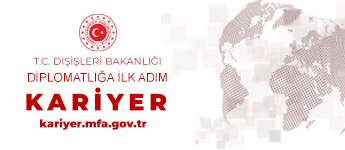BÜYÜKELÇİ SELÇUK ÜNAL’IN YUNUS EMRE ENSTİTÜSÜ TARAFINDAN DÜZENLENEN “ANTIQUE TURKISH RUGS COLLECTION” SERGİSİ AÇILIŞINDA YAPTIĞI KONUŞMA
Distinguished Ambassadors,
Dear Guests,
Ladies and Gentlemen,
It is a great pleasure to be here at the opening of the exhibition of “Antique Turkish Rugs Collection”. Let me first extend my sincere thanks to the Amsterdam Yunus Emre Institute for organizing this special event.
This exhibition has multi-fold significance. First of all, it is within the context of celebrating the 100th anniversary of the Friendship Treaty between the Republic of Türkiye and the Kingdom of the Netherlands signed on 16 August 1924. This Treaty signifies the formal start of our contemporary friendship. It was equally important since the Netherlands was one of the first seven nations to recognize the modern Turkish Republic. I say “contemporary friendship” because the roots of the Turkish-Dutch relations go back almost five centuries to mid-16th century.
Which brings me to the second aspect of this exhibition: its content. Here are some of the finest examples of a historic art which is truly embedded in Turkish culture. Turkish rug derives from ethnic, religious and cultural pluralism of one of the most ancient centres of human civilization: Anatolia. Turkic peoples migrating from Central Asia brought with them the timeless art of carpet to Anatolia with their traditional motifs, ornaments and rich cultural history.
Third important aspect of the exhibition is reflections of the Turkish rugs worldwide. The Turkish rug has a special influence not only in European art, but also on Dutch and Flemish painting. Through trade started in 16thcentury the painters of the Dutch Golden Age of mid 16th to mid 17thcentury have frequently depicted the beauty of the Turkish rug in their art. This was done often in a context of dignity, prestige and luxury. Some noteworthy examples can be seen in the works of Gabriël Metsu, Cornelis de Vos, Thomas de Keyser, Cornelis Bisschop, Pieter de Hoochs and Johannes Vermeer, among others. I would kindly suggest to look at Vermeer’s famous “The girlreading a letter” and “Music lesson”.
This context in the Renaissance of Dutch painting is yet another effect of the almost five-centuries of Turkish-Dutch interaction.
Furthermore, through the Dutch trade post in İzmir, rugs of western Anatolia, in particular İzmir and Uşak, found their place in the art of other famous Dutch and Flemish painters as well as in famous Dutch mansions. Their reproduction has started in Deventer in a factory called Deventer Koninklijke Verenigde Tapijtfabriek at “Smyrnastraat” which is İzmir Caddesi. The mass productions there were named as “Smyrnatapitjen” – which is İzmir rugs.
I am happy to share another historic tie with you in this event that resonates the rich cultural aspect of our relations while we look forward to the second century of contemporary Turkish-Dutch friendship.
Thank you.

Pazartesi - Cuma
09:00 - 18:00
Tatil Günleri 2025
| 1.01.2025 | 1.01.2025 | Yeni Yıl |
| 30.03.2025 | 30.03.2025 | Ramazan Bayramı |
| 21.04.2025 | 21.04.2025 | Paskalya |
| 27.04.2025 | 27.04.2025 | Milli Gün (Kral'ın Doğumgünü) |
| 5.05.2025 | 5.05.2025 | Kurtuluş Günü (1945) |
| 29.05.2025 | 29.05.2025 | Dini Bayram |
| 6.06.2025 | 6.06.2025 | Kurban Bayramı |
| 9.06.2025 | 9.06.2025 | Dini Bayram |
| 29.10.2025 | 29.10.2025 | Cumhuriyet Bayramı |
| 25.12.2025 | 26.12.2025 | Noel Tatili |
+31 10 766 0007




 TÜRKİYE'DE YATIRIM İMKANLARI
TÜRKİYE'DE YATIRIM İMKANLARI